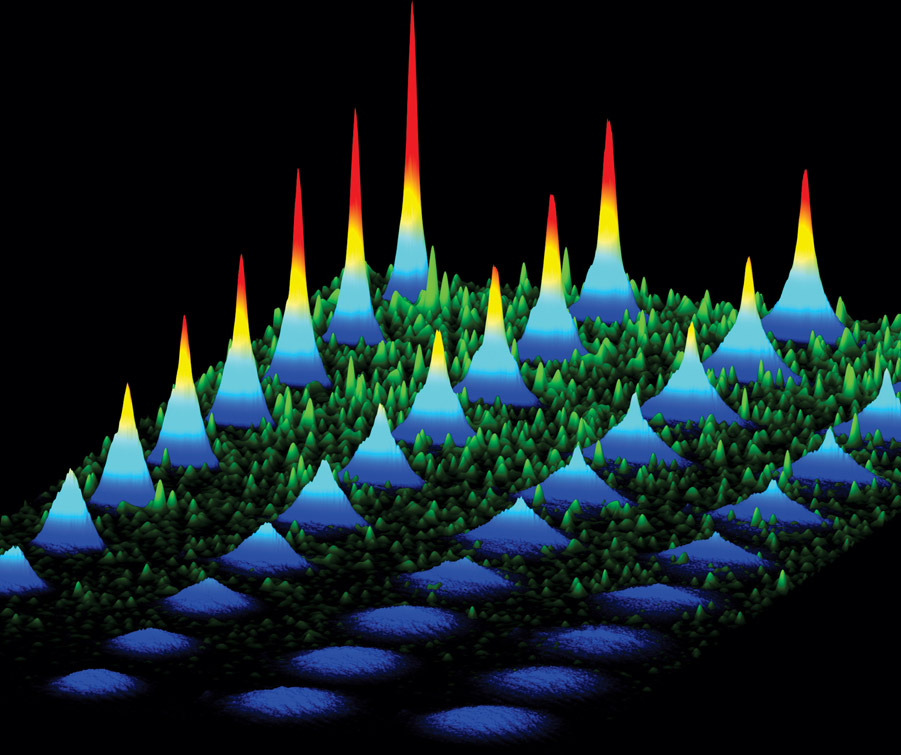Three-dimensional Anderson localization
DOI: 10.1063/PT.3.1342
Anderson localization is a destructive interference phenomenon in which scattering in a disordered medium prevents waves from propagating (see the articles in PHYSICS TODAY, August 2009, pages 24
This plot captures the results of several experimental runs. The disorder was created by optical speckle in a green laser that passed through a trapped cloud of potassium-40 atoms; the green background, increasing from bottom to top, indicates the strength of that disorder. Temperature increases from left to right, and the islands represent the 2D projections of the atom density shortly after the cloud is released from the trap. In a feature unique to 3D localization, the projections show two components.At low disorder there are only broad bases, but as the disorder strengthens and the temperature decreases, sharp peaks appear on top of them. The peaks comprise the localized atoms, which stay stationary over time while the higher-energy, nonlocalized atoms in the base diffuse away. The control afforded by the experimental setup could shed new insights into 3D localization and the role of interparticle interactions. (
To submit candidate images for Back Scatter, visit http://www.physicstoday.org/backscatter.html

Figure by W. R. McGehee.

